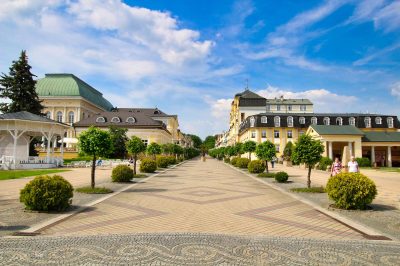Today we are taking you to Karlovy Vary or Carlsbad in the Bohemian Spa Triangle in the Czech Republic. The city is the country’s most famous and fashionable spa resort and, with its hot springs and beautiful villas, resembles a complete work of art. Not only were the Karlovy Vary Resolutions adopted here, which marked a significant turning point in German history, but greats such as Goethe, Schiller and Beethoven also came here for a cure. So there are plenty of reasons to take a closer look at Karlovy Vary!
This is Karlovy Vary
Karlovy Vary is the largest spa in the Bohemian Spa Triangle and one of the most famous spas in the world. Even in the Middle Ages, people made pilgrimages here in the hope that the healing waters of the Karlovy Vary springs would alleviate their illnesses and ailments. Over time, Karlovy Vary became increasingly popular and the list of famous spa guests, some of whom spent months here, is long: Peter the Great, Goethe, Beethoven, Wagner, Herder, Leibnitz, Schiller and Chopin are just some of the illustrious personalities who stayed here for a cure.
Even today, many convalescents and tourists flock to the town to drink from the 80 or so springs that originate here. However, it is not only the water that attracts guests, especially from Russia and Germany, but also the unique beauty of the center of Karlovy Vary. When this part of the world still belonged to Austria-Hungary, numerous magnificent buildings were built that still characterize the face of the city today. And so today you can drink a healing water from a Karlovy Vary sippy cup while strolling through the city and enjoying the Karlovy Vary flair. We present the most beautiful places in Karlovy Vary here.
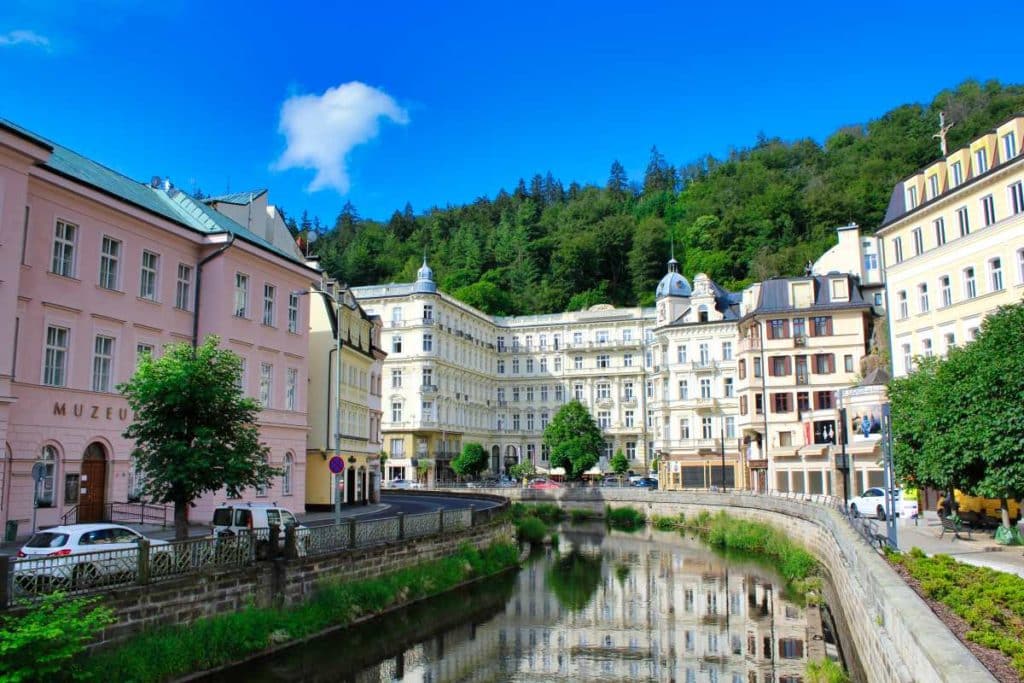
Grandhotel Pupp
Have you seen the James Bond film Casino Royale starring Daniel Craig? Then the building in the middle of the picture will certainly look familiar to you. The Pupp served as the film’s location, even though the action takes place in Montenegro rather than the Czech Republic. Since 1893, guests at the Pupp have been welcomed to a luxury hotel that leaves nothing to be desired. In addition to the casino, you will find timelessly elegant rooms, ballrooms, underground wine cellars and much more.
In socialist times, the most famous politicians of the Eastern Bloc stayed here. Emperor Franz Joseph was a guest here before the First World War. If you have the necessary change, you can even book his room and get into the same bathtub as Sissi’s husband. If your stay is too expensive, you should at least take a look in the foyer and try the Pupp cake in the café, which is almost as famous in the Czech Republic as the Sachertorte in Vienna.

Municipal theater
Have you ever heard of Fellner & Helmer? The Austrian architectural firm was one of the most innovative in the world around 1900 and specialized in theater buildings. Whether in Odessa, Prague, Bratislava, Czernowitz or Vienna, they created masterpieces that are among the most beautiful buildings of their kind. They also had a hand or pencil in the imperial Karlovy Vary and created a neo-baroque masterpiece. None other than the Klimt brothers and Ernst Matsch were commissioned to paint the interior and the stage curtain.
Dark past
However, the Karlovy Vary Municipal Theatre can also look back on a dark episode: Adolf Hitler announced the “return” of the Sudetenland to the German Reich from the balcony after the Munich Agreement in 1938. If you want to attend a performance, you can buy a ticket on the theater’s website and enjoy the magnificent interior with its sculptures designed by Viennese artist Theodor Friedl.
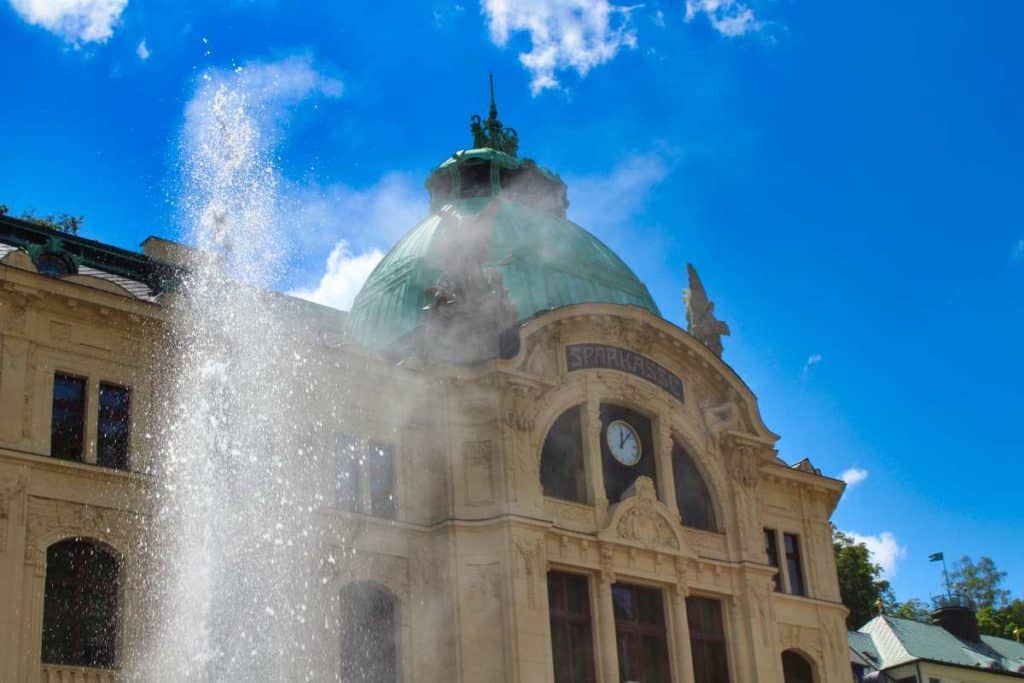
Sparkling water
Even Goethe, who was interested in geology, was fascinated by Karlovy Vary’s sparkling water. This is a 73.4° hot water jet that shoots metres into the air in the center of Karlovy Vary, not far from the theater. The bubbling waters have been used as a healing spring for centuries, and there are dozens of them throughout the city. They all have a different temperature and are used for drinking and other cures. The spa doctors in Karlovy Vary know exactly which water helps which ailment. However, you should be careful when drinking sparkling water, as too much is not healthy either.
But back to the fountain: the water jet was repeatedly built over, but the water always caused corrosion. Not even the concrete block erected in the 1970s, which now stands here, could withstand the pressure of the more than 2000 liters that shoot out of the ground every minute. This is why it is currently undergoing extensive restoration and the bubbler has been moved a few meters outside. Tip: You can book a tour to explore the underground of the fountain and learn a lot about this geologically unique region.
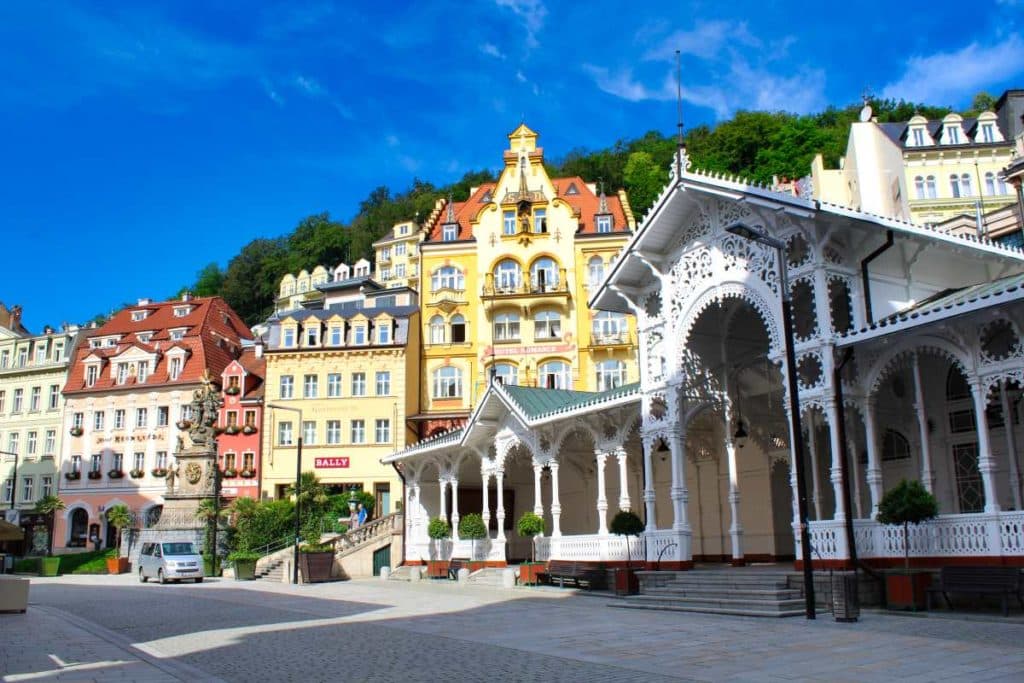
Marketplace
In a city with so many sights, it’s hard to choose an absolute favorite. But I still decided on one, the city’s market square. In the shadow of the town houses stands the market colonnade, which one would expect to find in this style in the Alps. It was built by the same architects as the theater, who once again demonstrated their versatility here. Also interesting is the plague column, which you can see in the photo on the left and which reminds us that Karlovy Vary was once spared a plague epidemic. For me, the market square is also so beautiful because you can sit comfortably on the terrace of a café and watch the hustle and bustle with a coffee and a piece of cake.
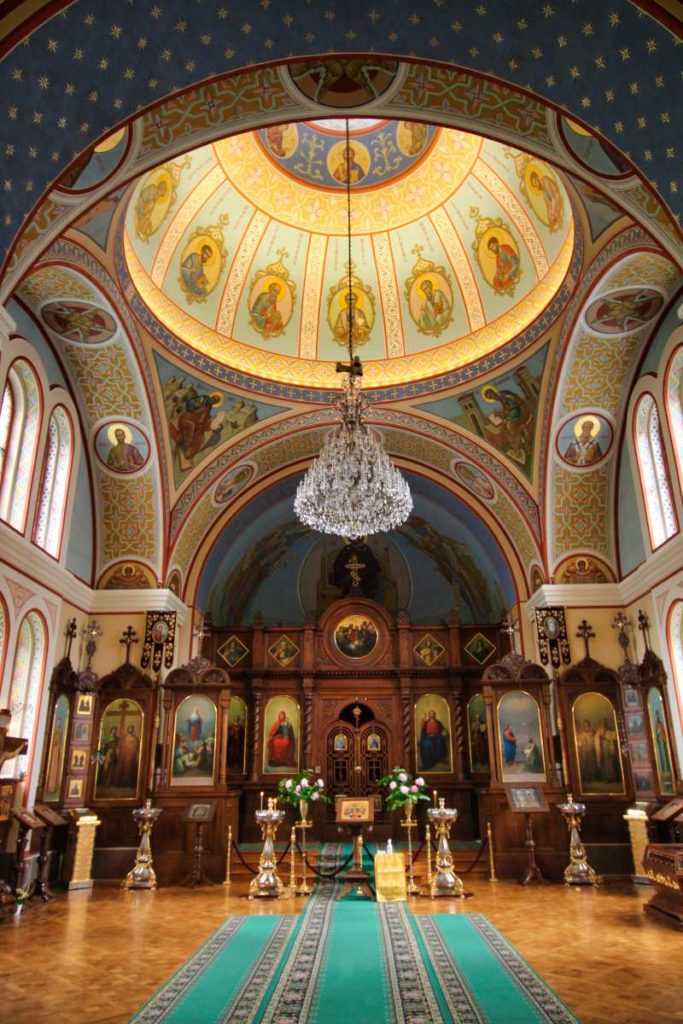
St. Peter and Paul’s Cathedral
The Czech Republic is the country in Europe with the highest percentage of atheists. The Orthodox St. Peter and Paul’s Cathedral shows that there are nevertheless some impressive churches here. Karlovy Vary was and is particularly popular with wealthy Russian spa guests, not least Peter the Great, who vacationed here several times. And so that the faithful also had a church befitting their status, this gem was built at the end of the 19th century, for which the Russian Tsar Nicholas II donated several icons. Its style is reminiscent of the Holy Trinity Cathedral in Moscow’s Ostankino. The church was only restored in 2019, so you can now admire it in all its glory again.

Mill fountain colonnade
There is a whole series of colonnades in Karlovy Vary. This is where spa guests draw their water and slowly sip their way through the area. The walk is an important part of the therapy. One colonnade is more beautiful than the next. The most famous, however, is the neo-Renaissance mill fountain colonnade. It has five springs and, like many others, stands on the banks of the Teplá, forming a beautiful contrast to the neoclassical villas on the other side of the river. Concerts are held daily in the mill fountain colonnade in summer, which you can listen to for free.

Becherovka Center
If you follow the banks of the Teplá, you will come to a less classic sight, but one that is still worth a visit. The Czech Republic is primarily known for its beer, but also for its wine and Becherovka. The “Karlsbad Becherbitter”, as the drink was originally called, was invented here over 200 years ago by a German pharmacist and an English doctor and the exact recipe is still a well-kept secret to this day.
However, you can still take a look over the shoulders of the inventors of Becherovka, as you can enjoy a modern exhibition about the drink in the Becherovka Center, which is somewhat reminiscent of Jägermeister and is said to have miraculous healing powers. There is also a tasting afterwards. What you won’t find here, but is very popular in the Czech Republic, is concrete. Concrete? Yes, you read that right: Bechervoka with tonic water is certainly the most Czech of all long drinks and tastes really delicious thanks to the combination of bitter and sweet.

Diana Tower
Karlovy Vary is a “vertical city”, so it goes up and down. And to get the best view, you have to climb the Diana Tower. Don’t worry, if you don’t fancy the climb, you can take the historic funicular from the Hotel Pupp to the top in style. From the top of the tower, you have a fabulous view that stretches across the entire Kaiserwald to Germany. There is also a mini zoo and a butterfly house, which is particularly exciting for children. And when I stopped for refreshments at the nice café below the tower, a cheeky peacock paid me a visit and stole some of my food.

Stag jump
From the Diana Tower, you can take a short walk to Hirschsprung, another viewpoint. Alternatively, you can take the funicular, which also stops here. The place is associated with the legend of the town’s foundation, as Emperor Charles IV is said to have founded Karlovy Vary here because a deer jumped into a hot spring just as he was about to kill it. When you look at the photo, you might wonder why there is no deer to be seen. Baron von Lützow made a joke out of the founding legend and had a metal chamois erected here, as in his opinion no stag would be mad enough to jump over a precipice. Whether stag or chamois, the view from here is always beautiful …
A few meters further on you can see a bust of Peter the Great, who loved to ride his horse here. Next to it, a stele commemorates Marie Thérèse Charlotte of France. She was another famous spa guest and the daughter of Marie Antoinette and Louis XVI, as well as the only member of the French royal family to survive the French Revolution.
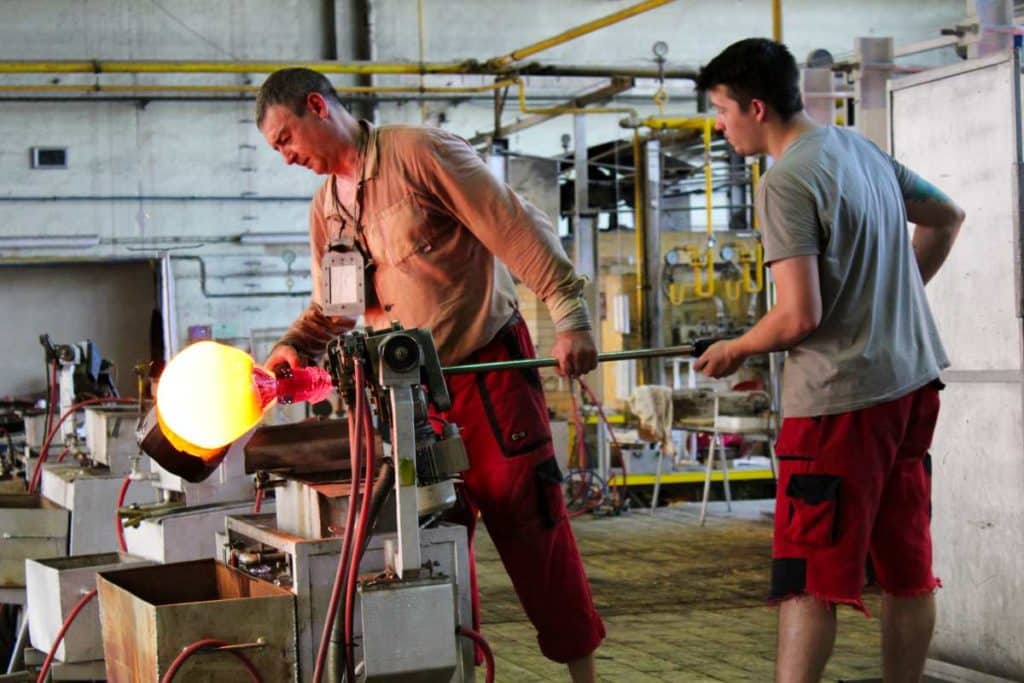
Moser factory
Ludwig Moser came up with the idea of founding a glass business in Karlovy Vary around 150 years ago. This marked the start of one of the most successful Czech companies. Today, Bohemian glass enjoys an excellent reputation worldwide and in the past there was hardly a royal court that did not drink from Moser glasses. On the factory premises on the outskirts of Karlovy Vary, you can watch the glassblowers at work and marvel at some of the most beautiful pieces Moser has ever produced in the museum. There is also a store, of course, but you’d better start saving up …
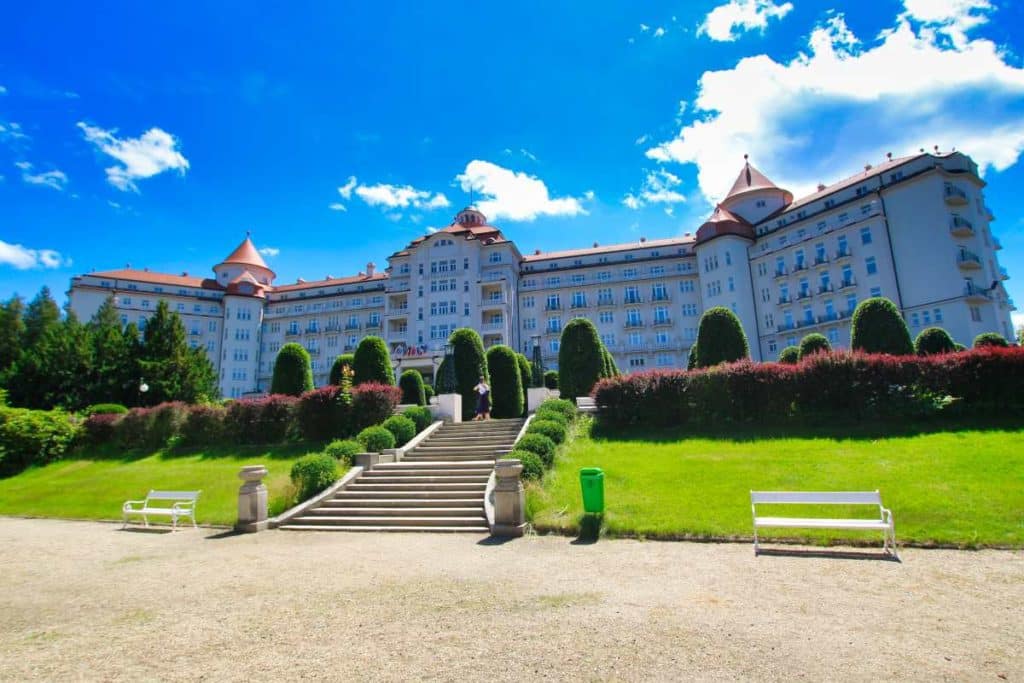
Overnight stay in Karlovy Vary
There are a number of high-class accommodations in Karlovy Vary. When visiting the city, you will have to dig a little deeper into your pockets than elsewhere, but many of the hotels are steeped in history and have some special features.
- Grandhotel Pupp*: Sleeping like James Bond or the Austrian Emperor is only possible at the Pupp. Of course, the hotel has its price, but the class of the Pupp is almost unrivaled.
- Egerländer Hof*: The Egerländer Hof, run by a Sudeten German family, is much cheaper and very quaint. The historic house on the market square looks like a small museum and the family that runs it looks after its guests with loving care.
- Hotel Imperial*: You may know the hotel in the picture from the movie “Kadaver”, which was released on Netflix in 2020. Here you can lay your head high above the city on a mountain and have a great view of the city. It was one of the largest hotels in Austria-Hungary when it opened and the building, which was designed by the interior designers of the Hotel Sacher in Vienna, looks a bit like a fairytale castle, especially when clouds of mist waft around the building early in the morning.
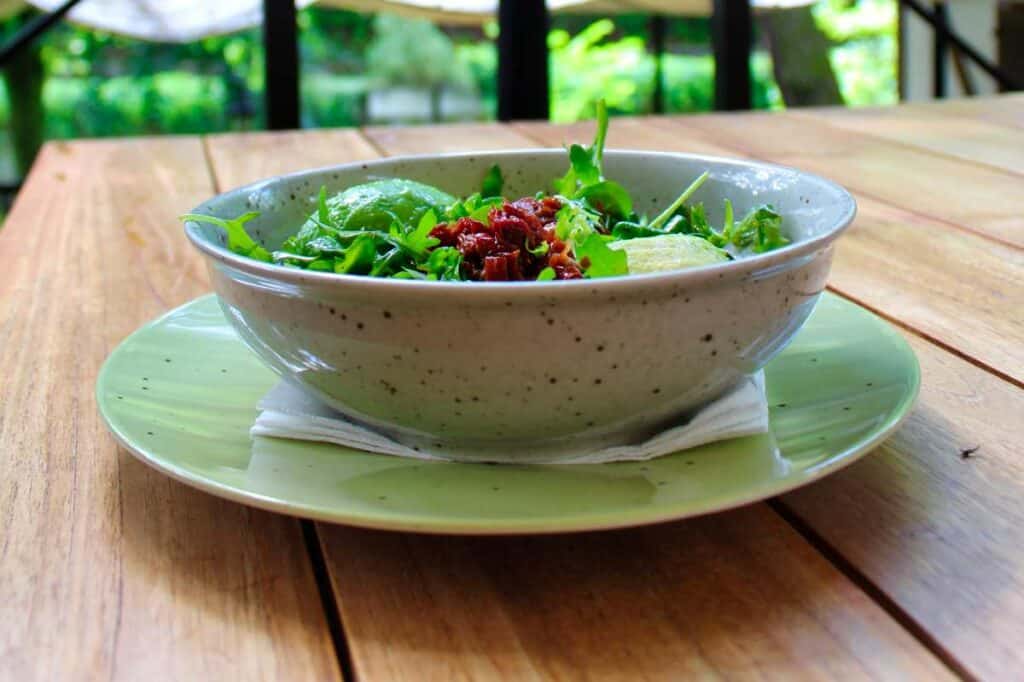
Eating and drinking in Karlovy Vary
Compared to the sometimes steep hotel prices, the food in Karlovy Vary is relatively cheap. I can recommend these restaurants to you without reservation:
- Pivovar Karel IV: At the Becherovka center there is a rustic brewery cellar where you can get real Czech beer on tap and sample the whole variety of hearty Bohemian cuisine.
- Malé Versailles: In “Little Versailles”, where I also took the photo, you can enjoy a wonderful outdoor seat by a lake in a park not far from the Orthodox church. In addition to salads, there are also grilled dishes and changing daily specials. There is also a small playground for children.
- Pirosmani: Had enough of Czech cuisine? Pirosmani, which is somewhat hidden away on a hill, serves the best Georgian classics. You’ll also feel like you’re in a Georgian farmhouse.
Karlovy Vary Karlovy Vary book tip
Would you like to explore Karlovy Vary, Mariánské Lázně or Františkovy Lázně? Then I recommend the CityTrip Bohemian Spa Triangle from Reise Know-How Verlag. It will be published soon and can be pre-ordered now!
No products found.


